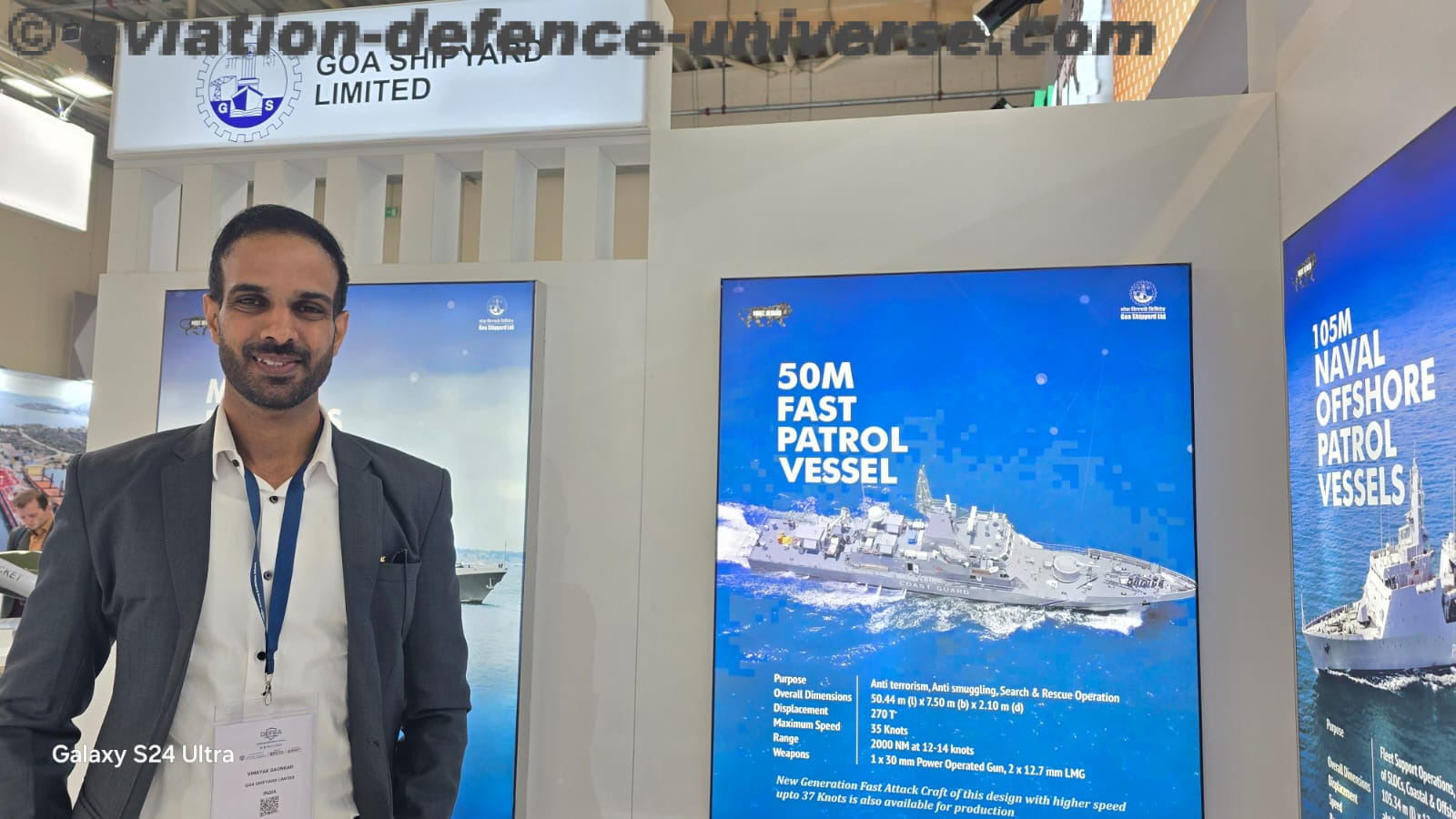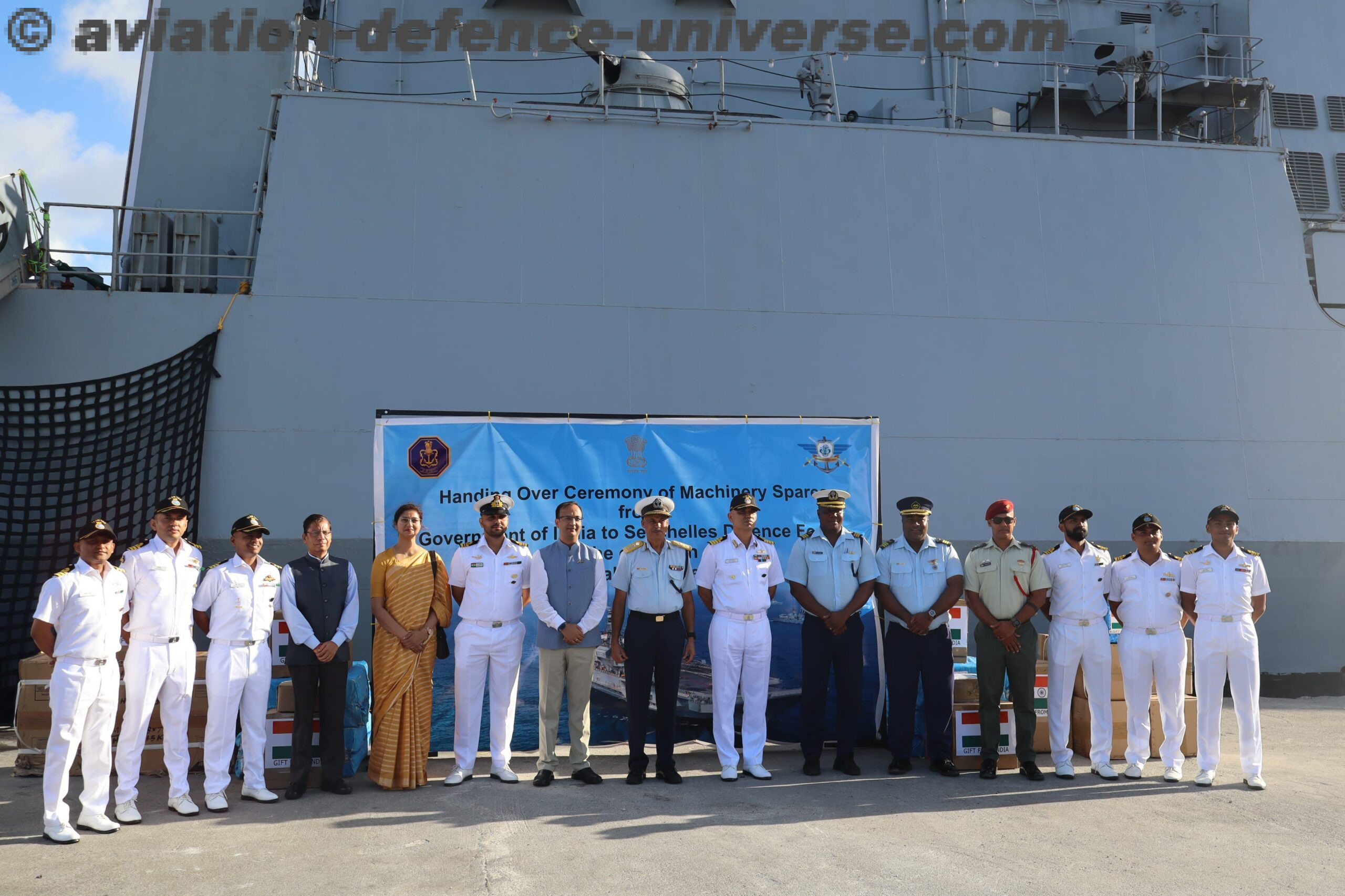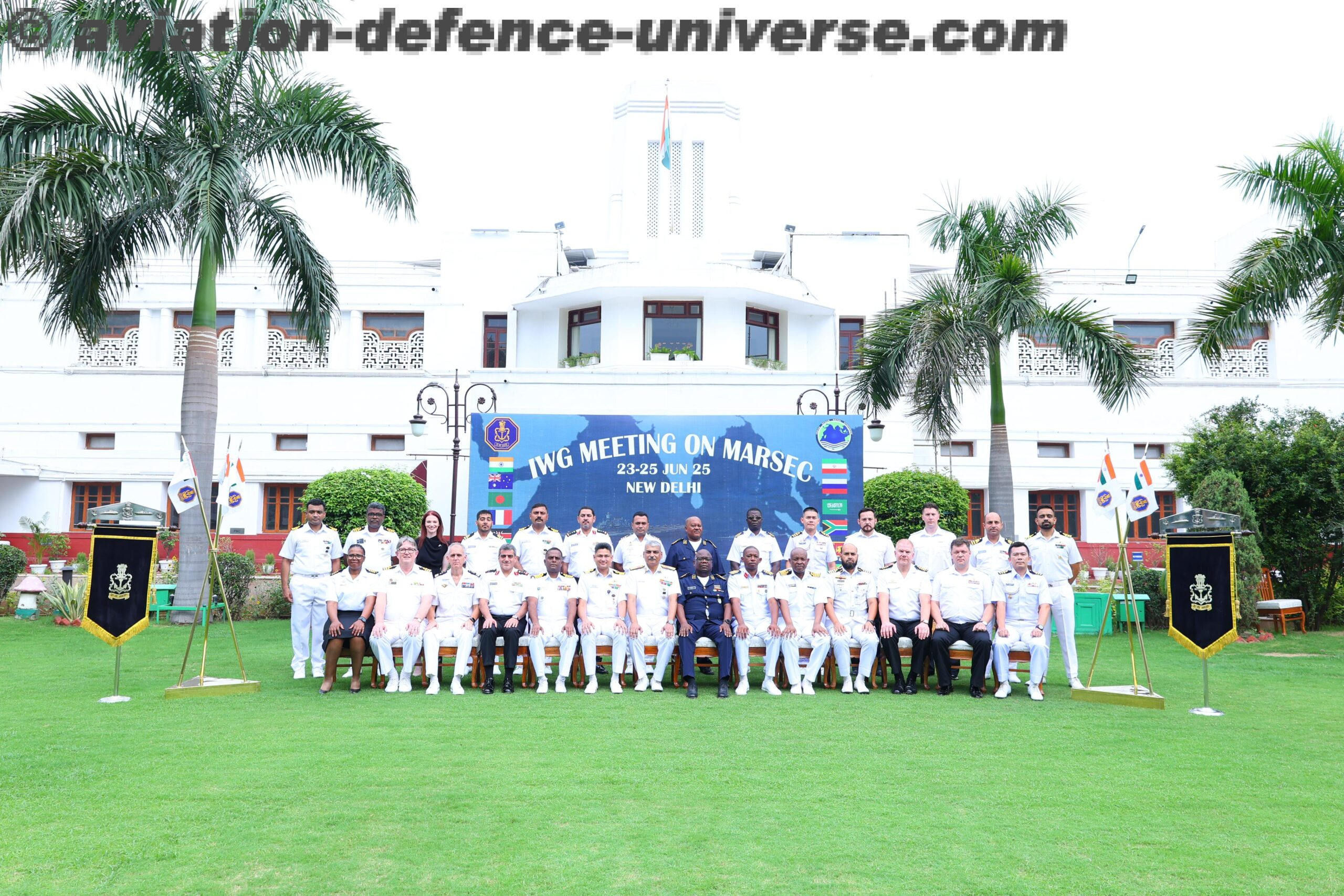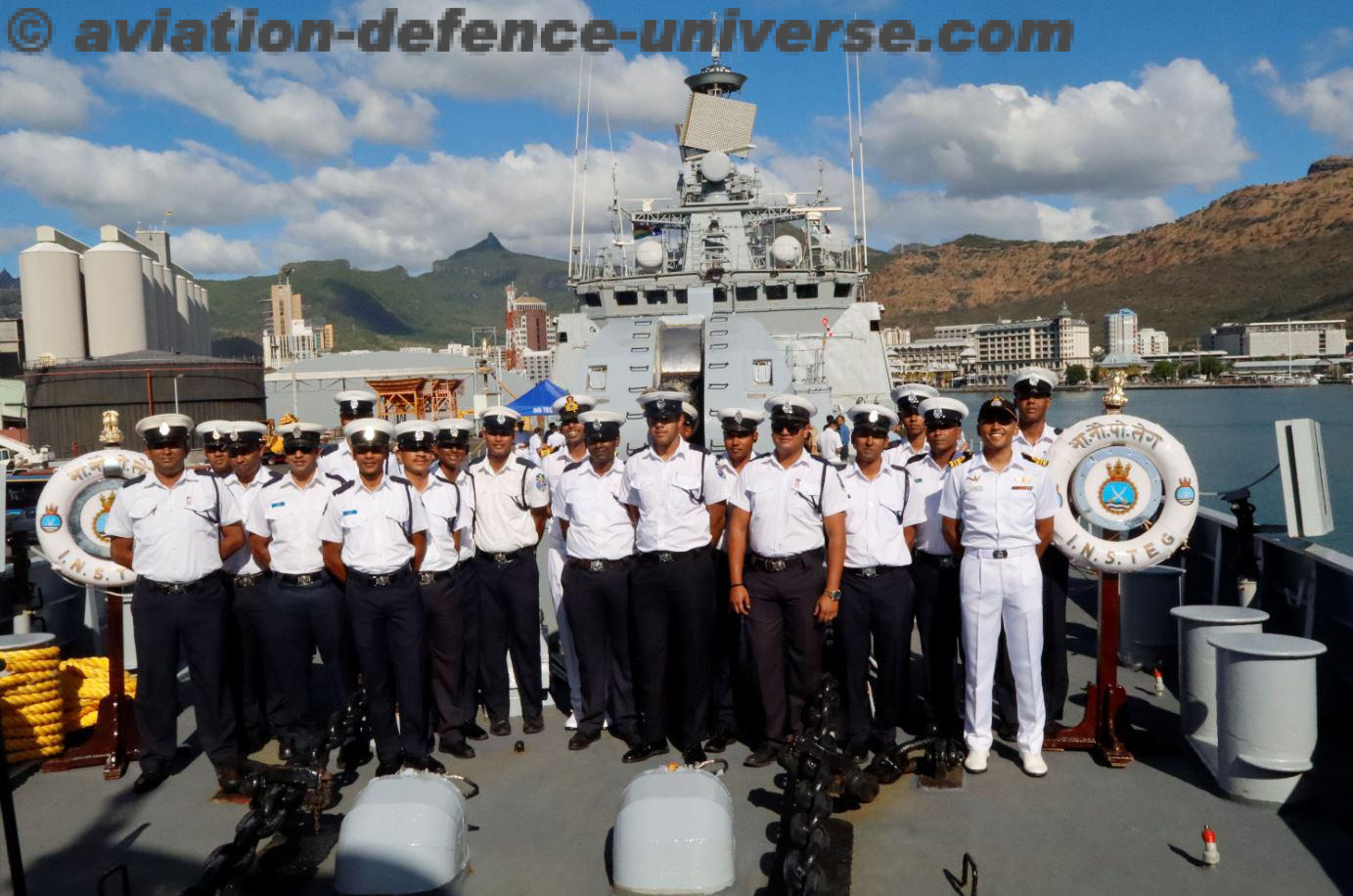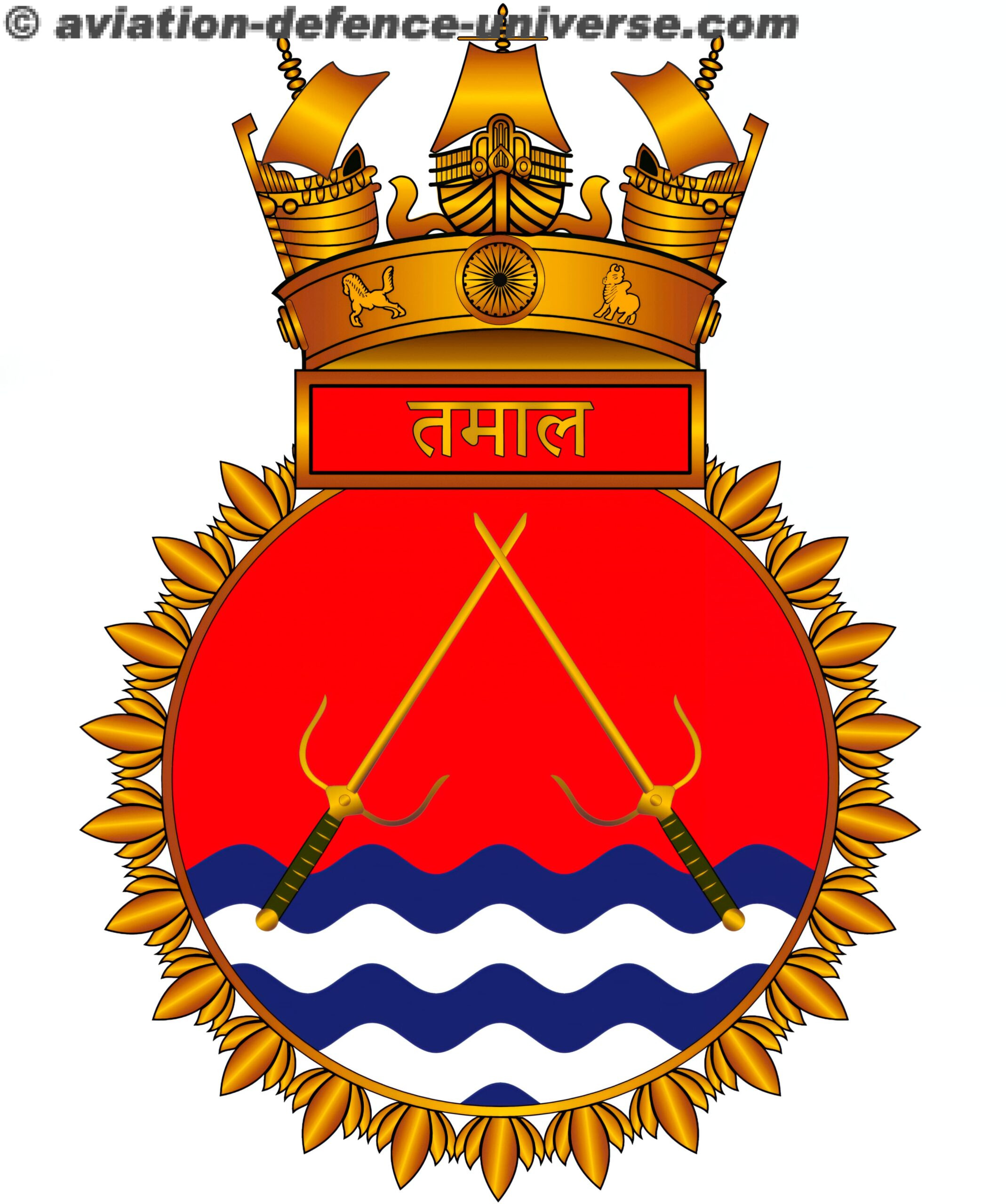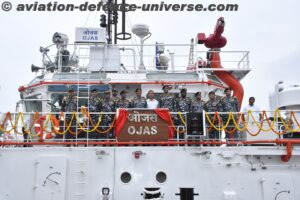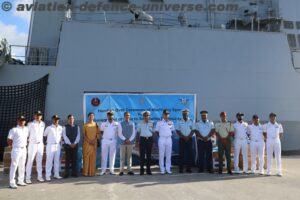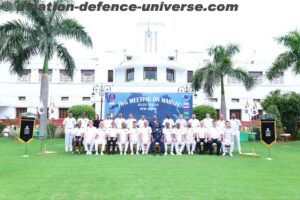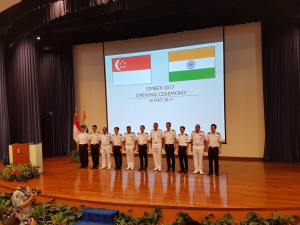- To enhance its Blue Water capability, the Indian Navy opted to strengthen its submarine arm for which Request for Proposal (RFP) to acquire six more conventional submarines under Project 75(I) was cleared by the DAC. The project will cost around Rs. 80,000 crore. Under this programme six conventional submarines are planned to be built in India with foreign collaboration.
- To augment the Navy’s offensive capabilities, government has decided to procure twelve Mine Counter Measures Vessels (MCMVs) for which Accord of Necessities (AoN) has been issued and has nominated Goa Shipyard Limited to process the case with TOT from abroad.
- Government has taken decision to induct 16 Multi-Role Helicopters (MRH) for the Navy, which will go a long way in mitigating gaps in Air Anti-Submarine Warfare capability. Apart from this initiative, it has also given a go ahead for the Major Refit/Mid Life Upgradation (MR/MLU) of Kamov 28 helicopters.
- The first ship of Project-15B Guided Missile Destroyer, christened INS Visakhapatnam was launched on April 20, 2015 at Mazagon Dock Limited, Mumbai.
- Sardar Patel, the latest Naval establishment of Indian Navy in the maritime state of Gujarat, was commissioned at Porbandar by the Chief Minister of Gujarat on May 09, 2015.
- Under Project-28, INS Kavaratti, the fourth in the series of Anti-Submarine Warfare Corvette was launched at GRSE, Kolkata by the Minister of State for Defence on 19 May 2015. These four ships of Project 28 have been designed indigenously by the Directorate of Naval design, New Delhi and bear testimony to the acclaimed legacy of naval designers.
- To provide a boost to the coastal defence capability of the Navy three follow-on Water Jet Fast Attack Craft namely INS Tarmugli, INS Tilanchang and INS Tihayu were launched by the Vice Chief of Naval Staff at a function at Garden Reach Shipbuilders and Engineers Ltd, Kolkata on 30 June 2015.
- There was timely commencement and completion of Phase-I of Karwar ‘Project Sea Bird’ and THE Indian Naval Academy, Ezhimala. Under this programme the Defence Minister commissioned INS ‘Vajrakosh’ – the latest establishment of the Indian Navy at Karwar, Karnataka on 09 September 2015.
- Three Intermediate Support Vessels (ISVs) were commissioned into the Indian Navy as T-48, T-49 and T-50 on September 29, 2015 in consonance with the ‘Make in India’ initiative. 14 of the ISVs were built indigenously by M/s SHM Shipcare, Thane while four were built by M/s ADSB and five by M/s Rodman Polyships.
- The indigenously designed and constructed Project 15A (Kolkata Class) Stealth Guided Missile Destroyer INS Kochi was commissioned by the Defence Minister on September 30, 2015 at Naval Dockyard, Mumbai. The ship can be truly classified as a ‘Network of Networks’ as it is equipped with sophisticated digital networks, such as Asynchronous Transfer Mode based Integrated Ship Data Network (AISDN), Combat Management System (CMS), Automatic Power Management System (APMS) and Auxiliary Control System (ACS). The AISDN is the information highway on which data from all the sensors and weapons ride. The CMS is used to integrate information from other platforms using indigenous data-link system, to provide Maritime Domain Awareness. The intricate power supply management is done using APMS, and remote control and monitoring of the machinery is achieved through the ACS.
- The Mazagon Dock Limited (MDL) reached another milestone, as the first ship of the Scorpene Class submarine, INS ‘Kalvari’ was separated from the pontoon and set afloat at the Naval Dockyard Mumbai on October 28, 2015. Later INS ‘Kalvari’ was brought back to Mazagon Dock Shipbuilders Ltd on October 29, 2015.
- The Indian Navy received a major fillip with the induction of eightBoeing P-8I Long Range Maritime Reconnaissance and Anti-Submarine Warfare aircraft at Naval Air Station Rajali, Arakkonam, Tamil Nadu (the first aircraft arrived in May 2013 and last in mid-2015). The squadron was formally dedicated to the nation by the Defence Minister on 13 Nov 15. The P-8I aircraft, based on the Boeing 737-800(NG) airframe, is the Indian Naval variant of the P-8A Poseidon of the US Navy. The aircraft is equipped with both foreign as well as indigenous sensors for Maritime Reconnaissance, Anti-Submarine operations and for Electronic Intelligence missions. The aircraft is fully integrated with state of the art sensors and highly potent Anti-Surface and Anti-Submarine weapons. The Indian Navy is also in the process of acquiring an additional four P-8I aircraft. The induction of the P-8I aircraft into the Indian Navy has greatly enhanced India’s maritime surveillance capability in the Indian Ocean Region.
- The Combined Commanders’ Conference 2015 was held on-board INS Vikramaditya off Kochi in an operational environment. This was done on the directives of the Prime Minister Shri Narendra Modi. The Conference was followed by an Operational and Naval Air Power Demonstration, wherein almost 30 ships, 05 submarines and 60 aircraft took part.
The Road Ahead
- With the release on 20 July 2015, of the Indian Naval Indigenisation Plan (INIP): 2015-2030, the Navy has given unmistakable notice of its firm intent to establish itself as a true Builder’s Navy, with attendant spinoffs enabling India to be a net provider of security in her maritime neighbourhood, by building capacity and enhancing capability of her regional friends and partners. Further, it is aware of the serious shortfalls in terms of both Indian R & D and Indian manufacturing, as the five drivers of the INIP, viz. (1) a lack of credible R&D in military sciences and technologies; (2) inadequate amalgamation between R&D and the manufacturing sector; (3) the absence of an integrated approach amongst users, designers and manufacturers; (4) commercial unviability due to a lack of economies of scale approach; and (5) the effect of technology-denial regimes, clearly reflect the Navy’s clarity of perception in charting the course ahead.
Joint Exercises
Indo-French Naval Exercise Varuna – 2015
- Fourteenth edition of Indo-French naval exercise (VARUNA) was conducted off Goa from 23 April to 02 May 2015, which had both a harbour and sea phase exercise. The French Navy was represented by Aircraft Carrier Charles de Gaulle, two destroyers Chevalier Paul and Jean de Vienne, replenishment tanker Meuse and a maritime patrol aircraft Atlantique 2. The Aircraft Carrier Charles de Gaulle was carrying its complement of fighter aircraft Rafale M, Strike Aircraft Super Etendard, E2C Hawkeye AWACS and helicopters Dauphin and Alouette 3. From the Indian side Aircraft Carrier INS Viraat, destroyer INS Mumbai, stealth frigate INS Tarkash, guided missile frigate INS Gomati, replenishment tanker INS Deepak, submarine INS Shankul and a few Fast Attack Craft along with P-8 I Long Range Maritime Reconnaissance and Seaking 42B and Chetak helicopters, participated.
SIMBEX – 2015
- The Indian Navy’s Eastern Fleet under the command of Rear Admiral Ajendra Bahadur Singh, Flag Officer Commanding Eastern Fleet, was on an operational deployment to southern Indian Ocean and South China Sea. As a part of this deployment, INS Satpura, indigenously built guided missile stealth frigate and INS Kamorta, the latest and indigenous Anti-Submarine Warfare Corvette arrived at Singapore on 18 May 2015. These ships participated in IMDEX-15 and later conducted bilateral naval exercise SIMBEX-15 with the Singapore Navy from 23-26 May 2015.
Exercise AUSINDEX – 2015
- The Inaugural Bilateral Maritime Exercise between India and Australia AUSINDEX – 15 was conducted off the east coast of India from 11 to 19 September 2015. The exercise was jointly inaugurated by Rear Admiral Jonathan Mead, Head Navy Capability of Royal Australian Navy (RAN) and Rear Admiral Ajendra Bahadur Singh, Flag Officer Commanding Eastern Fleet on board INS Shivalik at Visakhapatnam. The exercise started with harbour phase encompassing briefings and practical demonstrations along with professional interactions. It was followed by a sea phase, which included fleet manoeuvres, gun firings as well as coordinated anti-submarine exercises. The exercise further enhanced the ability of both navies to undertake regional, joint and / or combined operations such as Humanitarian Assistance and Disaster Relief.
Exercise Malabar – 2015
- The 19th edition of MALABAR exercise was conducted in the Bay of Bengal from 14 to 19 October 2015. Along with the Indian Navy and the US Naval Forces, the Japan Maritime Self-Defence Forces (JMSDF) also participated in the exercise. The scope of Malabar – 15 included wide ranging professional interactions and a diverse range of operational activities during the sea – phase. An indigenous frigate INS Shivalik, INS Ranvijay, INS Betwa and a Fleet Support Ship INS Shakti and one submarine INS Sindhudhvaj represented the Indian side. Beside these, LRM Patrol Aircraft P8I and some integral rotary wing helicopters also participated in the trilateral exercise. The US Navy was represented by the ships from Carrier Task Force (CTF) 70 of the US Navy 7th Fleet, based at Yokosuka, Japan. One Nimitz Class aircraft carrier USS Theodore Roosevelt, Ticonderoga Class cruiser USS Normandy and Freedom Class Littoral Combat ship USS Fort Worth were part of the CTF. Besides these nuclear powered submarine USS City of Corpus, Christi, F18 aircraft and P8A Long Range Maritime Patrol Aircraft also participated. JMSDF was represented by JS Fyuzuki a missile destroyer with SH 60K integral helicopter. This trilateral exercise significantly enhanced naval cooperation among important navies of the Indo-Pacific region.
Indra-Navy -2015
- The eight edition of Indo-Russian bilateral exercise INDRA NAVY 2015 was conducted in the Bay of Bengal off Visakhapatnam from 07 to 12 December 2015. The scope of the exercise included wide-ranging professional interaction during the harbour phase and a diverse canvas of operational activities at sea across a spectrum of maritime operations. During the exercise, the Indian Navy was represented by INS Sahyadri – an indigenous frigate, INS Ranvijay – a guided missile destroyer and INS Shakti – a fleet support ship in addition a submarine INS Sindhuvir, the P8I Long Range Maritime Patrol Aircraft, Dornier Short Range Patrol Aircraft, Hawk Advanced Jet Trainer and other integral rotary wing helicopters. The Russian Federation Navy was represented by four ships drawn from the Pacific Fleet. The exercise helped to further strengthen mutual confidence and interoperability and also enabled sharing of best practices between both the navies.































